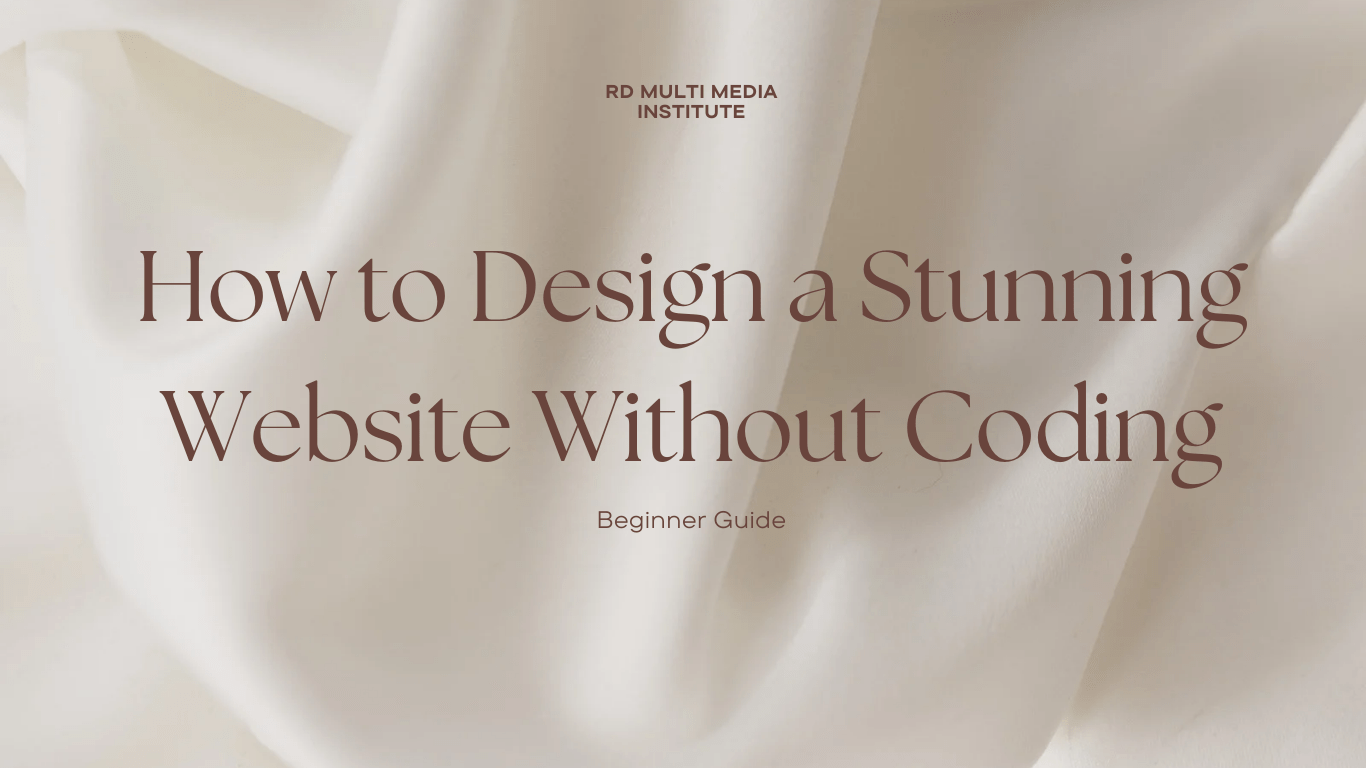In today’s digital world, having a stunning website is no longer an option—it’s a necessity. Whether you’re a small business owner, a freelancer, or someone who simply wants to share ideas online, a well-designed website can elevate your presence and make a lasting impression. But here’s the catch: what if you have zero coding experience?
Good news! You don’t need to be a tech wizard to build a visually appealing and functional website. Thanks to intuitive website builders and smart design techniques, creating a website without coding is easier than ever. This guide offers a structured approach to creating a polished, engaging, and standout website.
Step 1: Define Your Website’s Purpose
Before you dive into designing, take a moment to clarify what your website is all about.
Ask yourself:
- Is it a personal blog, an online portfolio, an eCommerce store, or a business website?
- Who is your target audience?
- What key message do you want to communicate?
- Having a clear vision will guide your design choices and help to create a website that serves its purpose effectively.
Step 2: Choose the Right Website Builder
Website builders are a lifesaver for non-coders. They offer drag-and-drop functionality, beautiful templates, and user-friendly interfaces. Following are some of the common website builder:
- Wix: Ideal for beginners, offers AI-powered design assistance and complete creative freedom.
- Squarespace: Known for its sleek and modern templates, great for creatives and businesses.
- WordPress.com: A powerful platform for blogging and business sites with extensive customization options.
- Shopify: Perfect for eCommerce, with built-in payment processing and marketing tools.
Many website builders provide free trials, allowing you to explore their features before making a decision.
Step 3: Select a Stunning Template
Templates are the foundation of your website’s design. Website builders provide pre-designed templates, saving you from starting from scratch. Following are the things needed to be considered while selecting a stunning template:
- Simplicity is key: A clutter-free design keeps visitors engaged.
- Mobile responsiveness: Your website should display properly across different screen sizes.
- Customizability: Pick a template that allows you to tweak colors, fonts, and layouts to match your brand identity.
Most website builders allow you to preview templates in action, so explore your options before making a decision.
Step 4: Customize Your Website’s Design
Once you’ve picked a template, it’s time to make it uniquely yours. Here’s how you can do that:
1. Brand Your Website:
- Select a color palette that represents your brand’s identity.
- Use consistent fonts to maintain a professional look.
- Upload a high-resolution logo (if you have one).
2. Use High-Quality Images and Visuals:
A picture is worth a thousand words, and the right visuals can enhance your website’s appeal. Some great sources for free stock images include:
- Unsplash
- Pexels
- Pixabay
You can also use tools like Canva to create custom graphics and banners.
3. Keep Navigation Simple:
Visitors should find what they’re looking for within seconds. Stick to a simple menu structure with clear labels, such as:
- Home
- About
- Services/Products
- Blog (if applicable)
- Contact
Step 5: Add Essential Pages and Content
Your website isn’t just about aesthetics—it needs to be functional and informative. Here are the must-have pages:
1. Home Page
This is the first thing visitors see, so ensure it leaves a strong impression. Clearly communicate who you are and what you offer within seconds. Include a compelling headline, an engaging call-to-action (CTA), and eye-catching visuals.
2. About Page
People love knowing the story behind a brand or business. Highlight what sets you apart and why people should trust your brand.
3. Services/Products Page
If you’re selling something, this page needs to be well-organized with clear descriptions, pricing, and high-quality images.
4. Contact Page
Make it easy for visitors to reach you. Provide a contact form, your email address, and links to your social media profiles.
5. Blog (Optional but Recommended)
A blog helps build credibility, attract visitors, and improve your website’s SEO ranking.
Step 6: Optimize for SEO (Search Engine Optimization)
Even the most beautiful website won’t be effective if no one can find it. Here’s how to improve your SEO:
- Use relevant keywords in your content.
- Write descriptive meta titles and descriptions.
- Optimize images with alt text.
- Improve page speed by compressing images.
- Get backlinks from reputable sources.
- Most website builders have built-in SEO tools to guide you through these steps.
Step 7: Make It Mobile-Friendly
Over half of web traffic comes from mobile devices, so your website must be responsive. Most website builders automatically adjust for mobile, but double-check by previewing your site on different screen sizes. Adjust fonts, buttons, and images as needed for a seamless experience.
Step 8: Test and Launch!
Before going live, test everything:
- Click all links to ensure they work.
- Check for typos or formatting errors.
- Test forms and contact buttons.
- Ensure fast loading times.
Once everything looks good, hit the publish button and celebrate—you now have a stunning website!
Conclusion:
Designing a stunning website without coding is absolutely possible. With the right tools, a bit of creativity, and attention to detail, you can create a website that not only looks professional but also serves its purpose effectively. The key is to keep it simple, user-friendly, and visually appealing.



